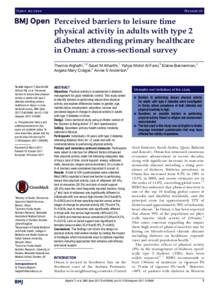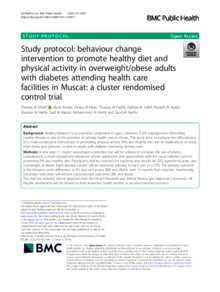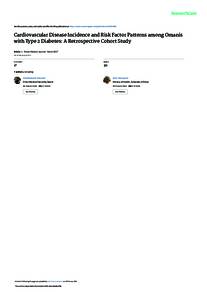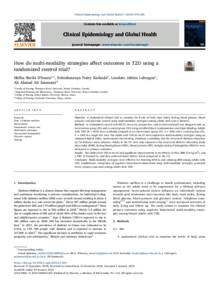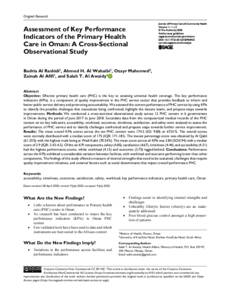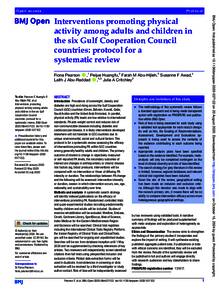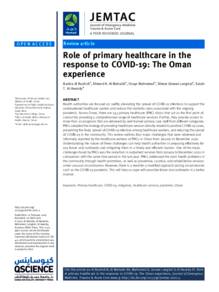Document
Perceived barriers to leisure time physical activity in adults with type 2 diabetes attending primary healthcare in Oman : a cross-sectional survey.
Identifier
DOI: 10.1136/bmjopen-2017-016946
Source
BMJ Open. v. 7, 11, e016946
Contributors
Al-Harthi, Saud M., Author
Al-Farsi, Yahya Mohd., Author
Bannerman, Elaine., Author
Craigie, Angela Mary., Author
Anderson, Annie S., Author
Country
United Kingdom.
Publisher
BMJ Publishing Group.
Gregorian
2017-11-01
Language
English
English abstract
Objectives Physical activity is fundamental in diabetes management for good metabolic control. This study aimed to identify barriers to performing leisure time physical activity and explore differences based on gender, age, marital status, employment, education, income and perceived stages of change in physical activity in adults with type 2 diabetes in Oman. Design Cross-sectional study using an Arabic version of the 'Barriers to Being Active' 27-item questionnaire. Setting Seventeen primary health centres randomly selected in Muscat. Participants Individuals>18 years with type 2 diabetes, attending diabetes clinic for >2 years and with no contraindications to performing physical activity. Primary and secondary outcome measures Participants were asked to rate how far different factors influenced their physical activity under the following categories: fear of injury, lack of time, social support, energy, willpower, skills, resources, religion and environment. On a scale of 0-9, barriers were considered important if scored ≥5. Results A total of 305 questionnaires were collected. Most (96%) reported at least one barrier to performing leisure time physical activity. Lack of willpower (44.4%), lack of resources (30.5%) and lack of social support (29.2%) were the most frequently reported barriers. Using 2 test, lack of willpower was significantly different in individuals with low versus high income (54.2%vs40%, P=0.002) and in those reporting inactive versus active stages of change for physical activity (50.7%vs34.7%, P=0.029), lack of resources was significantly different in those with low versus high income (40%vs24.3%, P=0.004) and married versus unmarried (33.8%vs18.5%, P=0.018). Lack of social support was significant in females versus males (35.4%vs20.8%, P=0.005). Conclusions The findings can inform the design on physical activity intervention studies by testing the impact of strategies which incorporate ways to address reported barriers including approaches that enhance self-efficacy and social support.
ISSN
2044-6055
Resource URL
Category
Journal articles

